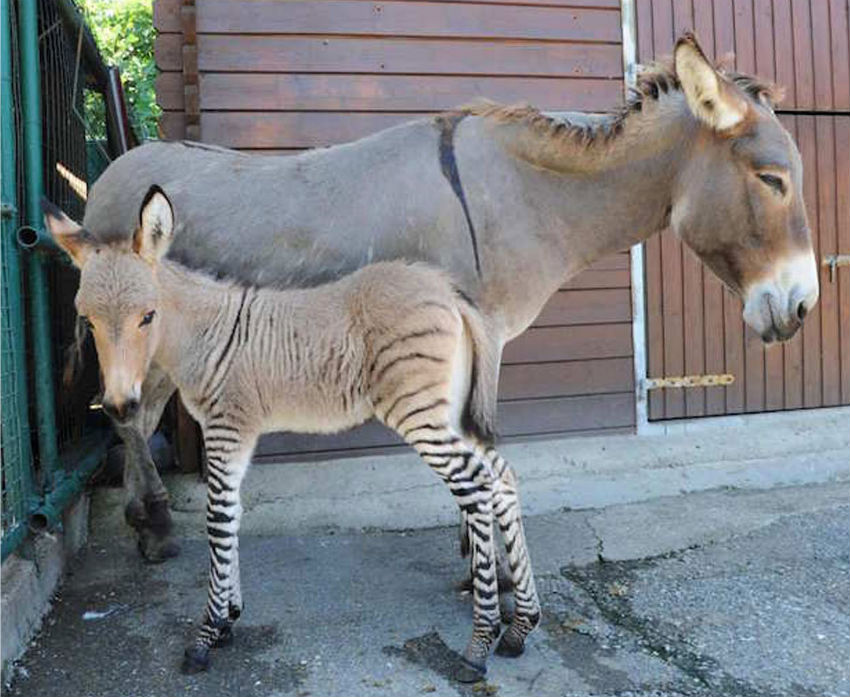 A zebra-donkey hybrid with his donkey mother. Image:
Iannuzzi et al. (2017)
A zebra-donkey hybrid with his donkey mother. Image:
Iannuzzi et al. (2017)
Zebra-donkey Hybrids
Zonkeys
Mammalian Hybrids
|
A diligent scholar is like a bee who takes honey from many different flowers and stores it in his hive.
—John Amos Comenius
|
This hybrid (Equus asinus × Equus burchelli) is known as a zonkey (or zedonk, zebrass, zeedonk, zebradonk, zebrinny, zenkey, zebronkey, or deebra). Reports say hybrids of both sexes have produced offspring. Usually a zebra stallion is paired with a she-ass, but the reciprocal cross is sometimes produced. For example, in 2005, an E. burchellii mare named Allison produced a zebrass called Alex sired by an ass on the island of Barbados.
Hybrids have bold stripes on their legs, but only faint striping elsewhere, except at the shoulders and along the spine (where both zebras and donkeys bear stripes). Individuals with bolder body striping are probable backcrosses to zebra. In general, the stripes, even on the legs, are narrower in hybrids than in the pure zebra parent.
Grevy’s zebras, with their big heads, large and rounded ears, and thick, erect manes look more like mules than do other zebras. Indeed, the website of the National Zoo (Washington) asserts that many experts view Grevy’s zebras as striped asses, not closely related to zebras (NATZ). Z. grevyi is also geographically intermediate between asses and zebras and is capable of hybridization with both. These facts suggest Z. grevyi as a PHP of crossing between asses and zebras, but the matter should be further investigated.
Darwin (1868, vol. II, p. 42) says, "Many years ago I saw in the Zoological Gardens a curious
Many types of hybrids, and not just zonkeys, show this sort of variation in characteristics with age, so that when young, they resemble one parent with respect to a given trait, but later the other.
The Somali Wild Ass
Note that known zebra-donkey hybrids, produced in captivity, are extremely similar to the supposedly critically endangered Somali Wild Ass (Equus africanus somaliensis), which is pictured below. Moreover, the Somali Wild Ass is a PHP of natural hybridization between zebras and donkeys because it is geographically and morphologically intermediate between zebras and donkeys. However, the probable hybrid status of animals described as “Somali wild asses” is not widely recognized because most biologists are not aware of the appearance of zebra-donkey hybrids, nor do they seem to be aware that these animals occur in a state of nature only in the region lying between zebra populations (to the south) and wild ass populations (to the north). Judging from its slightly more ass-like appearance, the so-called Somali Wild Ass probably represents a backcross population produced by hybridization between first generation zebra-ass hybrids and asses. Ironically, a huge amount of conservation funds are being spent on the preservation of this ostensible hybrid. If this animal truly is a hybrid, then funds would be better spent in preserving the parental populations that have crossed to produce it, especially the critically endangered African Wild Ass (Equus africanus), the wild version of the familiar domestic donkey, of which the Somali Wild Ass is usually treated as a subspecies.
Like all F1 hybrids, zebra-donkey hybrids receive one haploid set of chromosomes from each of its parents, one donkey set and one zebra set (Iannuzzi et al. 2017). The same sort of analysis should be applied to the Somali Wild Ass.
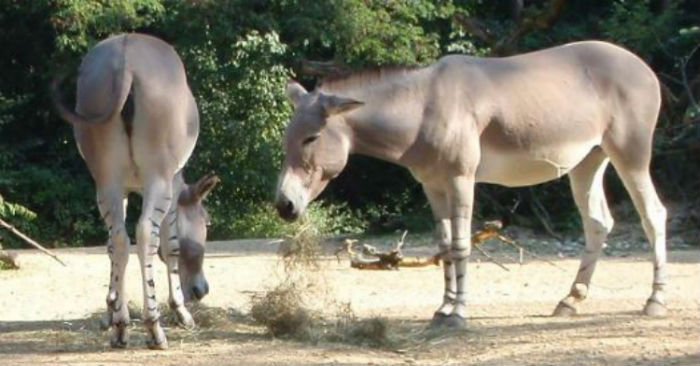 So-called Somali wild asses at Zoo Basel (Source: Wikipedia)
So-called Somali wild asses at Zoo Basel (Source: Wikipedia)
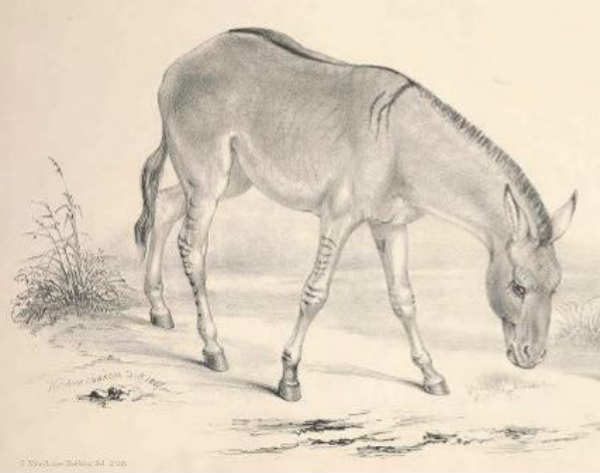 A donkey-zebra hybrid (Source: Gray 1850, Plate LVIII). Drawing of an animal present in the Knowsley Menagerie during the mid-1800s.
A donkey-zebra hybrid (Source: Gray 1850, Plate LVIII). Drawing of an animal present in the Knowsley Menagerie during the mid-1800s.
Sources: Ewart 1898, 1899; Flower 1929a (p. 253); Grubb 1981; Iannuzzi, A. et al. 2017; International Zoo Yearbook 1960, 1961, 1962 (p. 232), 1968 (p. 304), 1969 (p. 232), 1971 (p. 279), 1972 (p. 332); King et al. 1966; Riley 1911 (p. 229); Treus et al. 1963; von Lehmann 1982†. See also The Bartlett Society’s page on hybrids and the figure in Geoffroy Saint-Hilaire and Cuvier (1824-1842, vol. 3, pl. 315).
Note: Gray (1873, p. 38) stated that a skull of a hybrid of this type was in the British Museum .
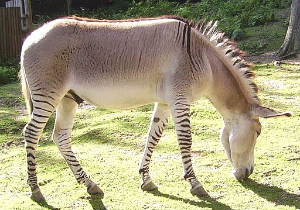
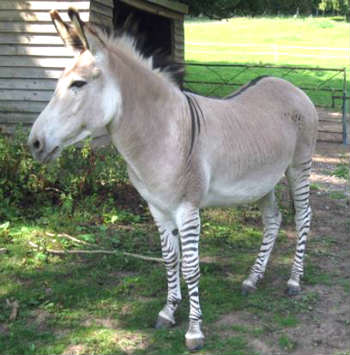
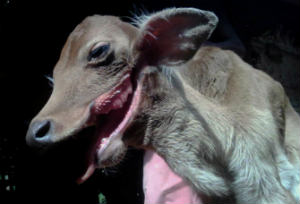 A dog-cow hybrid?
A dog-cow hybrid?